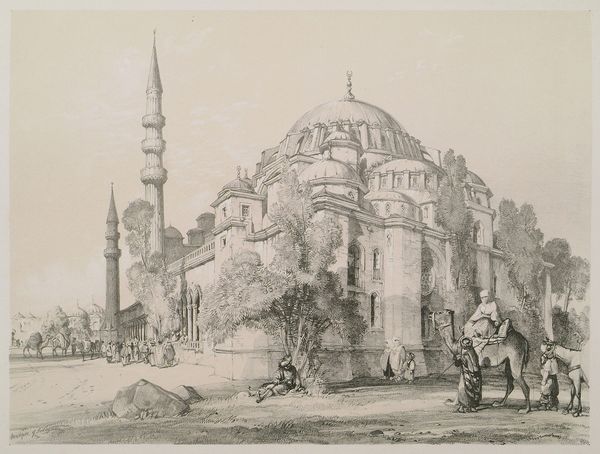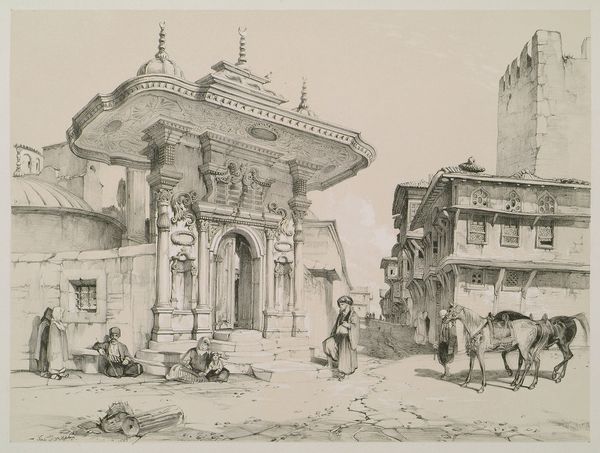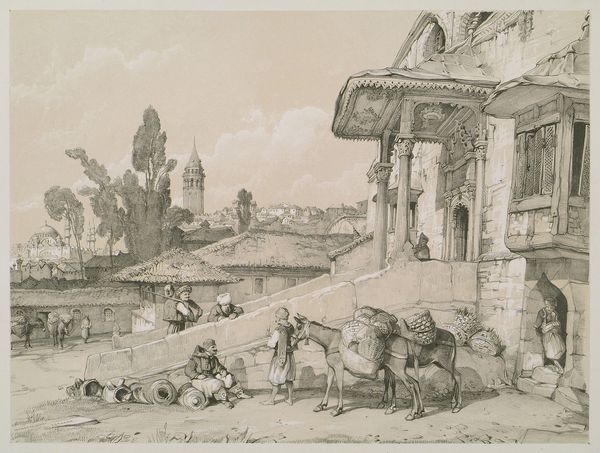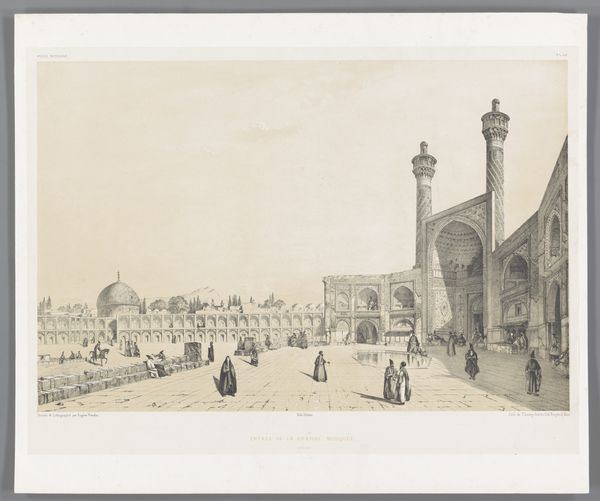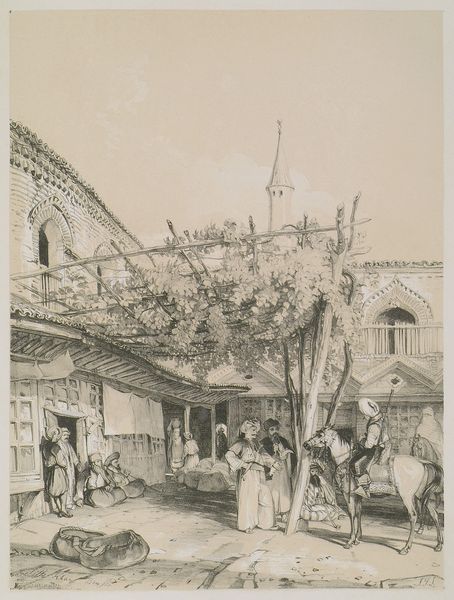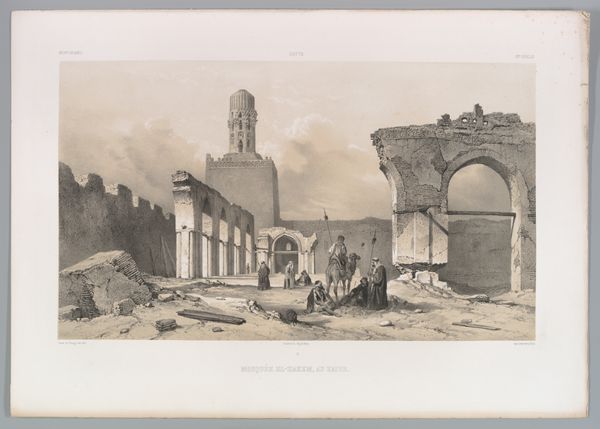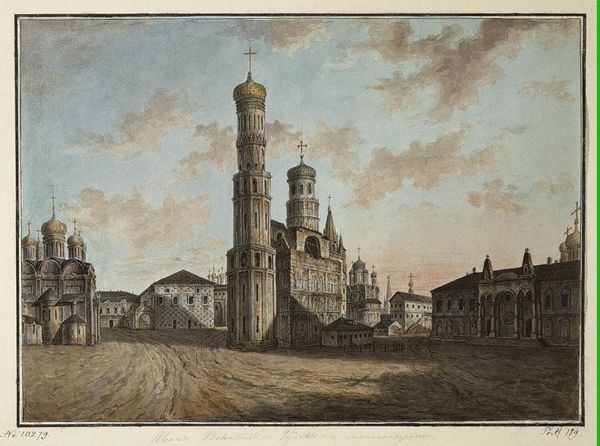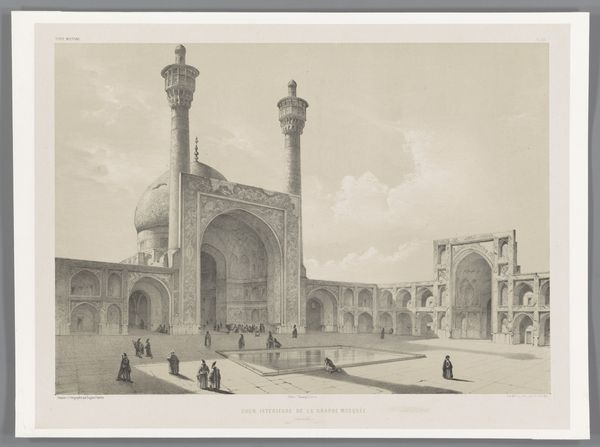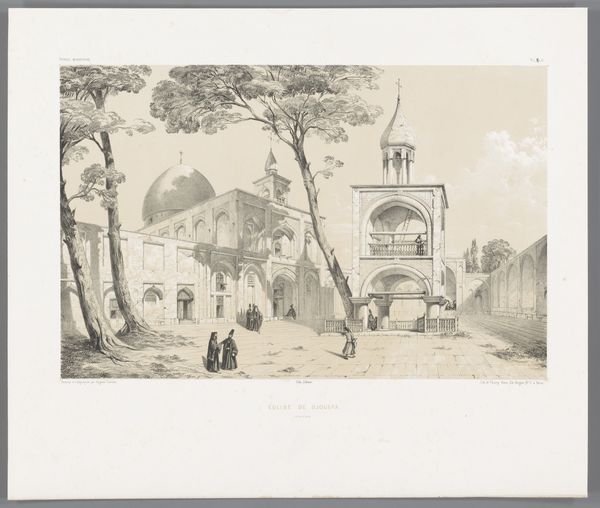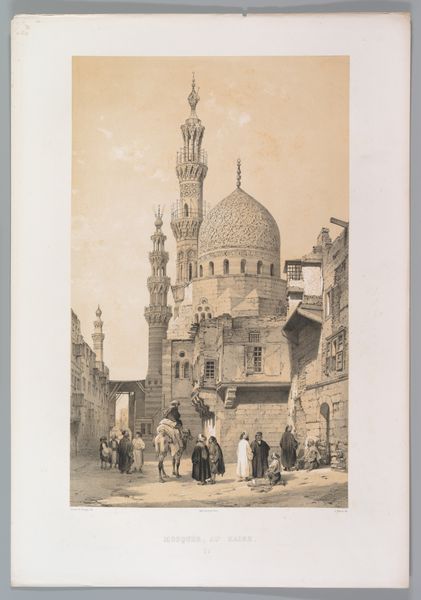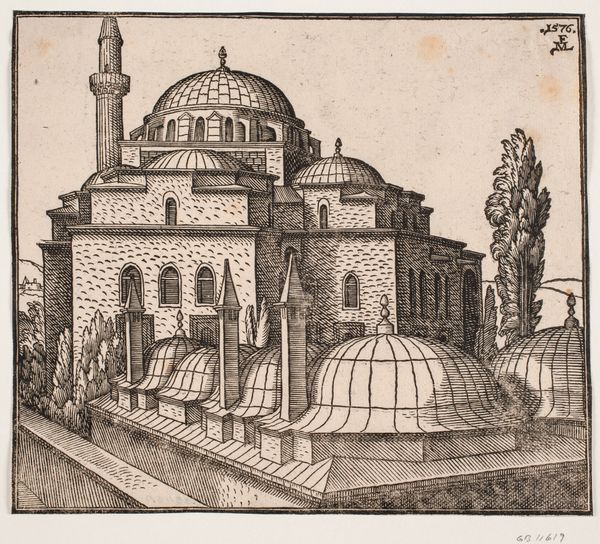
drawing, print, etching
#
drawing
# print
#
etching
#
landscape
#
etching
#
orientalism
#
cityscape
#
islamic-art
Copyright: Public domain
Editor: So, here we have John Frederick Lewis's "Saint Sophia and Distant View of Sultan Achmet (mosques)," an etching from 1838. It's so detailed and gives such a sense of everyday life unfolding. What historical contexts should we consider to understand the artist's viewpoint? Curator: Considering Lewis's body of work and the time he made this, it’s important to remember the surge of Orientalism that swept through Europe in the 19th century. Images like these reinforced ideas about the East. What aspects of this print do you think might appeal to a Western European audience hungry for exotic imagery? Editor: The architecture is certainly eye-catching, but I also notice all the figures in traditional dress. It’s a slice of a world that would be utterly foreign to most Europeans. Curator: Exactly. Now think about where Lewis, as a British artist, might have fit into the grand scheme. Were depictions like this always neutral records, or could they carry cultural and political baggage? Editor: I see what you mean. Perhaps these images, while seemingly objective, subtly reinforced a sense of Western dominance by presenting a vision of the East as static and "picturesque." Curator: Precisely! It raises interesting questions about power, representation, and the public role of art in shaping perceptions. Were images like this creating understanding, or simply feeding into stereotypes? Editor: That's something I hadn't fully considered before, how this image might play into broader societal trends and power dynamics of the time. I'll definitely view orientalist works with a more critical eye from now on. Curator: It’s all about asking questions, and challenging assumptions. This print shows us not just what Lewis saw, but what his audience wanted to see, and what role such images played in shaping European perceptions.
Comments
No comments
Be the first to comment and join the conversation on the ultimate creative platform.
